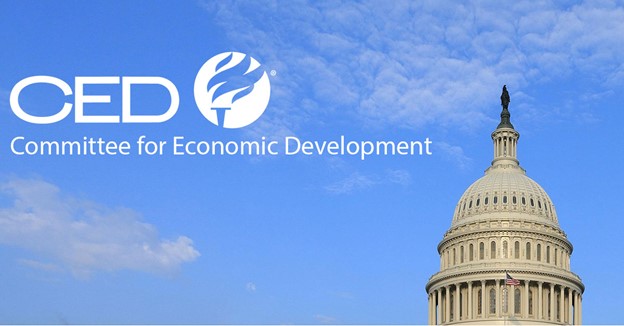D&I initiatives, including employee groups (also called employee resource groups), are an excellent resource to help organizations during times of crisis and change. Indeed, starting with the COVID-19 pandemic, companies with established employee group initiatives have been partnering with their groups in a variety of ways to support employees and inform organization-wide strategies and communications. Examples include:
- Helping assess and combat bias, stereotypes, and discrimination related to the COVID-19 crisis;5
- Gathering critical insights about the unique challenges some groups of employees are experiencing and crafting solutions to support them;
- Supporting and providing resources for employees dealing with work/life challenges (e.g., parents, caregivers);
- Providing resources on remote/virtual work best practices;
- Offering innovative solutions to both people and business problems;
- Supporting and giving a voice to employees who might feel isolated and/or uncomfortable speaking up; and
- Engaging broader segments of the organization and external communities to provide feedback on crisis management and recovery practices.
Below we present excerpts from case studies featuring global employee-group initiatives at two organizations: Europe-headquartered Barilla Group and US-headquartered Nielsen Corporation. Both organizations are leveraging their employee groups to drive positive change.
The information was gathered as part of a study The Conference Board published prior to the COVID-19 pandemic, What's Next for Employee Groups? Subsequently, we collected additional information about how these two companies’ employee groups are helping during the crisis and recovery, noting the importance of engaging employees in building stronger organizations.
Barilla Group (Barilla)
Barilla is a family-owned food company established in Italy in 1877, now an international group with a presence in more than 100 countries. Barilla’s chief diversity officer reports directly to the CEO and works in collaboration with a D&I board comprising external experts and an internal operating committee of employees across business and geographies who work to further embed D&I across different parts of the organization. The core of Barilla’s D&I strategy is to drive a positive work culture and engage employees at all levels with the change. The company’semployee resource groups (ERGs) are key to the D&I strategy and execution, and a resource for global implementation of D&I activities. Barilla’s ERG priorities include supporting communication on positive cultural change; helping identify key D&I issues and solutions by making the invisible needs of the minority visible to the majority; providing employees with the opportunity to share common experiences; breaking down silos; and developing inclusive leadership skills.
During the COVID-19 crisis and recovery, the leaders of the Barilla D&I team are working with their ERG leaders and their more than 1,000 members around the world to organize feedback sessions, understand how different groups are affected by the pandemic, and develop solutions to support them. Examples of key issues that emerged during the initial discussions include working mothers navigating the challenges of school closures and employees dealing with xenophobia and racism.
For more on how Barilla works with ERGs, see: “Barilla Group: Engaging Employees through Employee Resource Groups.”
Nielsen Corporation (Nielsen)
Nielsen is a global measurement and data analytics company with operations in over 100 countries, covering more than 90 percent of the world’s population. In 2019, the firm went through an organizational change, moving the D&I function, previously a separate function, into HR. As part of this restructure, CEO David Kenny took on the role of chief diversity officer to send a message on all-around leadership accountability, with the understanding that inclusion should not feel like a separate part of the business.6 Nielsen’s D&I strategy is driven by a global D&I team that works in collaboration with HR teams across the regions.
Employee groups are fully integrated in the talent and D&I strategy, targeted to both individual talent and improved organizational outcomes. ERGs are central components in the execution of the strategy across different regions where the firm operates (e.g., when hiring, attracting, and developing talent) and hence have been playing a key role during the COVID-19 crisis. In collaboration with the D&I team, Nielsen’s ERGs shifted priorities to respond to the unique challenges created by the pandemic. New strategic elements include making ERGs the official “voice of the associates” to collect insights and feedback, integrating new tools to help navigate uncertainty and changes, fighting xenophobia, and leveraging opportunities to create connections and build communities across the firm.
For more on how Nielsen works with ERGs, see: “Nielsen Corporation: Employee Resource Groups Growing Inclusion through Allyship.”
More information about What’s Next for Employee Groups? and the two initiatives is available here.
[2] “The Impact of COVID-19 on Job Loss: Quick Take,” Catalyst, June 1, 2020; “Jobs of less educated, women, and the young most vulnerable to COVID-19 layoffs” (chart), The Conference Board, 2020; Alexandra Kalev, “Research: U.S. Unemployment Rising Faster for Women and People of Color,” Harvard Business Review, April 20, 2020; “Pandemic will widen major gender gaps,” Oxford Analytica Daily Brief, April 30, 2020.
[4] “Pandemic will widen major gender gaps,” Oxford Analytica Daily Brief; Covid-19: Women, Equity, and Inclusion in the Future of Work, Catalyst, May 28, 2020; Sabattini, Addressing Stigma; Dnika J. Travis and Jennifer Thorpe-Moscon, “Report: Day-to-Day Experiences of Emotional Tax among Women and Men of Color in the Workplace,” Catalyst, February 15, 2018.
[5] Sabattini, Addressing Stigma.



